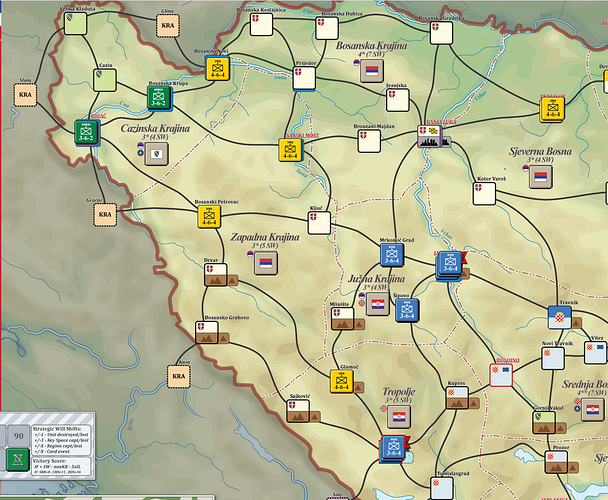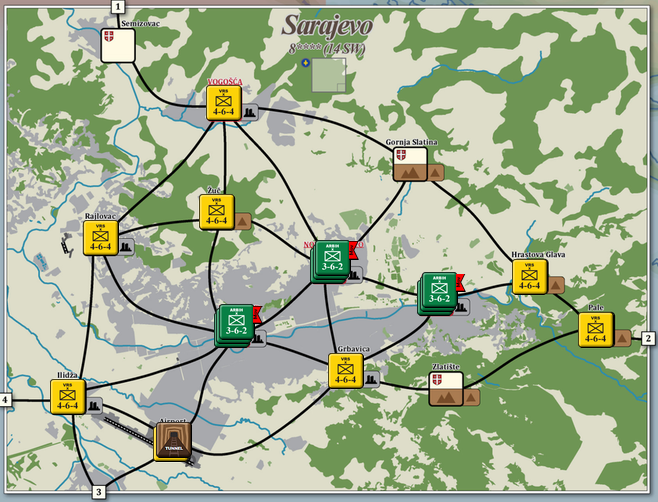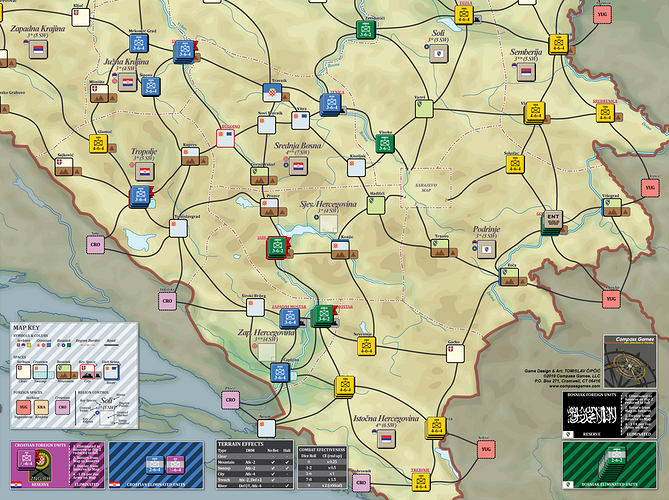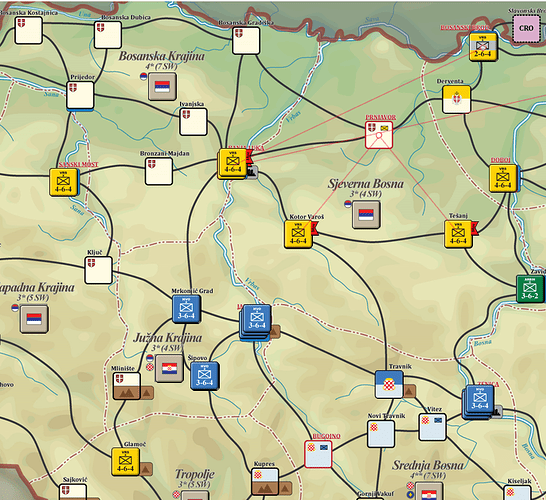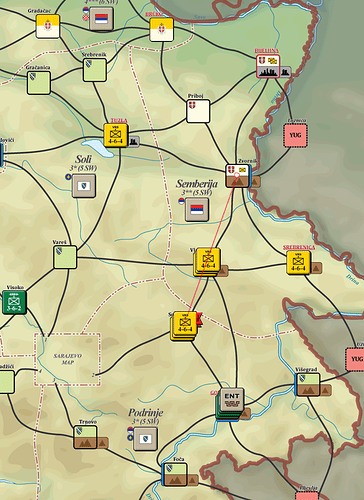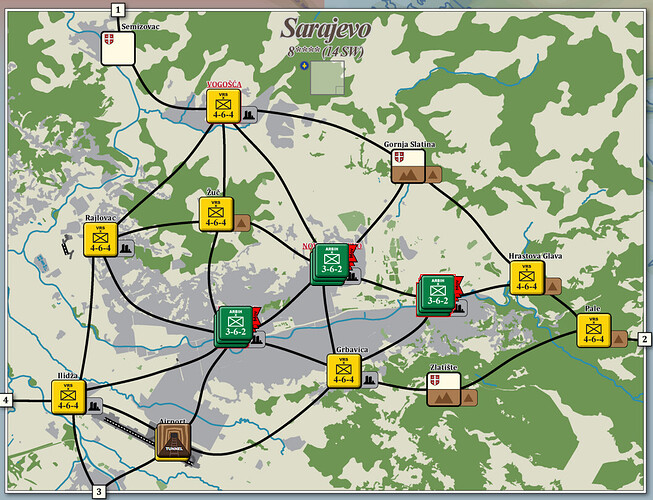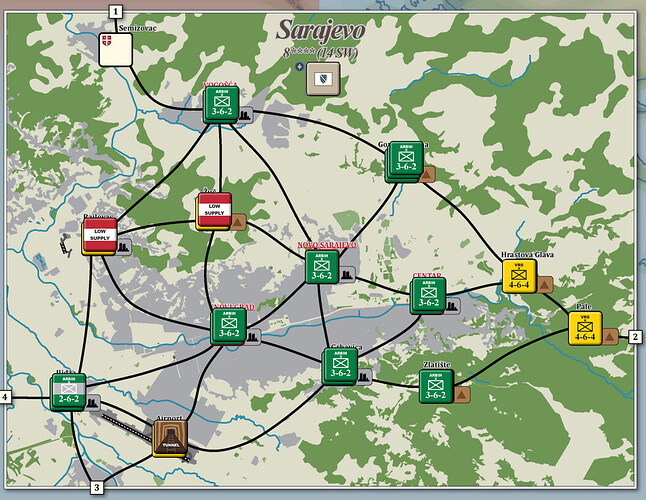It’s all you, Kane. I’m all posted out for a bit after the end of Turn 1.
Thanks!
Turn Two: 1993
One of the key differences between the three factions is their force composition and reinforcements. After first turn set up is complete, the Serbs have 35 Brigades, rated at 4-6-4 (Attack-Loss Factor-Movement). The Bosniaks have 22 Brigades, rated at 3-6-2. And the Croats have 12 Brigades, rated at 3-6-4. The Serbs have a lot of momentum, but they’ve also deployed their entire force–barring the deployment of units, the Serbs will not receive any reinforcements. The Bosniaks will gain 12 more 3-6-2 Brigades, 6 on each of turns 2 and 3. The Croats get 5 more 3-6-4s, 3 on turn 2 and 2 on turn 3.
Reinforcements must be placed in key spaces (names in red capitals on the map) or adjacent to key spaces, which must be friendly controlled, supplied, and within stacking limits (no more than 3 units per hex).
On turn 2, the Croats deploy reinforcements first. Before worrying about my 3 domestic Brigades, I need to decide whether to maintain the foreign units I’ve mobilized in the North. Maintaining a foreign force in the conflict generates opposition from the United States and Europe, resulting in a -1 move on the Foreign Attitude track, which would put me into sanctions territory. I have one Croatian Army unit (HV) in the North, and it is would need to attack across a river into, at a minimum, a full strength Serb unit to make it in to Bosnia, which is an extremely unlikely result. Instead, I choose to withdraw the unit–I may deploy it in a future turn where it can do more good.
The Serbs are concentrated in the Eastern half of Bosnia, which contains only one of my key regions. My forces are strong in the West, and it makes the most sense to me to bolster that strength. I deploy one unit in Jajce and two in Livno. (Those are the units with the red flags in them below:
Bruce’s Bosniaks deploy one unit to each of the three Bosniak controlled space in Sarajevo (at most one per space, since Sarajevo is an enclave, surrounded by Serb units). Bruce deploys the remaining three units in Jablanica and Istocni Mostar, key spaces in the South, near stacks of both Croat and Serb units. Again, his units are flagged red in the images below.
Action Round One
The Serbs begin by launching a major strategic redeployment of their forces in Bosnia. Ordinarily the Serbs would not be allowed to do a strategic redeployment due to western sanctions, but the event allows them to circumvent the rules, presumably thanks to resources stockpiled before the imposition of sanctions.
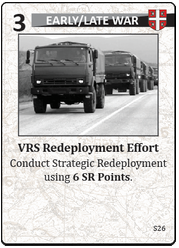
The Serbs can redeploy 6 brigades, moving them through an unlimited number of friendly spaces (and potentially through Yugoslavia (YUG) or Krajina (KRA)). Recognizing that the withdrawal of Croatian Army units freed up his units in the North, Pat moved four brigades west, providing a defense of the key space of Banja Luka and creating a perimeter around the key space of Prnjavor.
Pat also moved two brigades towards the besieged Bosniak key space of Gorazde in the east.
The Croatians move to surround a brigade of Serbs holed up in the mountain fastness of Glamoc, and pull units from further east to cover their flank.

The Bosniaks launch a limited offensive in Sarajevo, in an attempt to liberate the city.
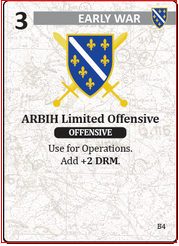
Bosniak forces launched a three pronged attack on Grbavica, a quarter of Sarajevo which had been occupied without a shot by Serbian reservists in 1992. A group of radical Serb nationalist volunteers, allegedly led by Zeljko “Arkan” Raznjatovic and Vojislav Seselj (who served as Deputy Prime Minister of Serbia from 1998-2000), later joined the reservists. Arkan and Seselj’s forces massacred Croat and Bosniak residents of Grbavica. Arkan, who later led the Serbian football club FK Obilic, was assassinated in 2000, which likely saved him from convicted by the International Criminal Tribunal for the Former Yugoslavia (ICTY) for his role the war. Seselj was was initially acquitted by the ICTY in 2016, but was convicted of crimes against humanity by the Appeals Chamber of MICT (the successor to the ICTY) in 2018.
The fighting is inconclusive. The Serbian brigade occupying Grbavica is reduced, but not eliminated. Bosniak losses are negligible. The civilian population, as ever, suffers the brunt of the harm.
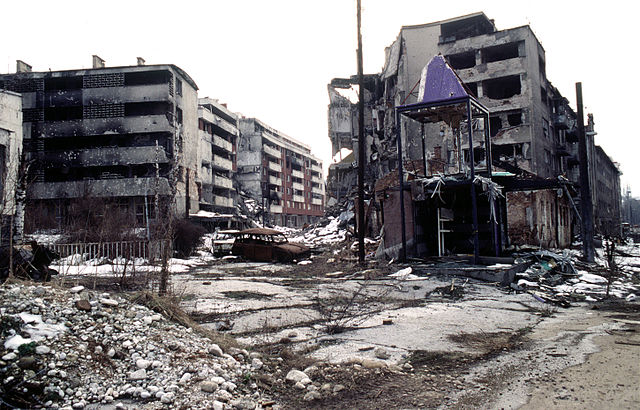
Grbavica in 1996, 4 months after signing of the Dayton Accords
Sorry for the lack of updates: I was working a lot and just getting the turns going was all I could handle – posting was out. We are now in Turn 3 (of 4) and the Bosniaks have gone on the offensive. With the help of a couple offensive cards, they have lifted the siege of Sarajevo.
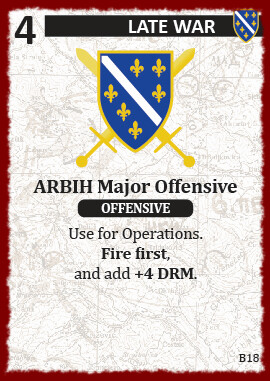
That sounds like you guys are leaving history by the wayside, right? Iirc the Sarajevo siege lasted for years.
In the game it was two years. In real-life, I think it was almost four.
Remember that there are only four turns in this game. We started in 1992. It is now 1994.
That’s accurate. As well, I as the Serbs made the Strategic decision (obvious now) to completely ignore Sarajevo and focus on the other Opstinas. I think I’ve spent no replacements, reinforcements, operations or any cards on the Sarajevo map.
